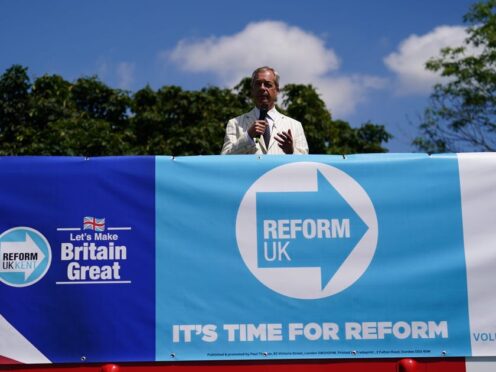During a campaign speech in Maidstone, Kent, Reform UK leader Nigel Farage said “no boats were crossing the Mediterranean until the Libyan war”, in a reference to irregular migration.
Evaluation
Migrants have been travelling from Libya and other north African countries to Europe for decades. This was happening prior to the revolution and civil war which began in Libya in 2011.
The facts
Unrest in Libya started in early 2011, with the UK carrying out air strikes to establish a no-fly zone over the country later that year.
Dictator Muammar Gaddafi was toppled in August of 2011, but Libya has remained highly fractured, with different parts of the country currently controlled by competing governments.
The worsening security situation in Libya has contributed to an increased number of boat crossings to Europe from North Africa. However, these crossings have been happening for decades.
A 2005 report from the European commission said around 15,000 migrants had tried to reach the Italian coast, according to various sources. It highlighted the Libyan coast as a key location for human trafficking.
The earliest available quarterly report from Frontex, the EU’s border control agency, notes that 5,200 migrants were detected using the central Mediterranean migrant route in the first quarter of 2009.
It said this dropped significantly in 2010 due to an agreement between the Italian and Libyan Governments which sought to curb irregular migration.
Historical news reports also suggest small boat crossings between the two countries have been happening for some time.
In a 2014 report, Frontex noted an uptick in migrants travelling across the central Mediterranean. It said several factors could be to blame, including reduced capacity from the Libyan authorities to tackle smuggling networks.
Links
Claim (archived post and video)
Libya: History, Encyclopaedia Britannica (archived)
EU Commission report, hosted by statewatch.org (archived)
Frontex Q1 2010 report (archived)
Research paper and summary of the Italy-Libya treaty from the Italian Institute of International Affairs (archived)
